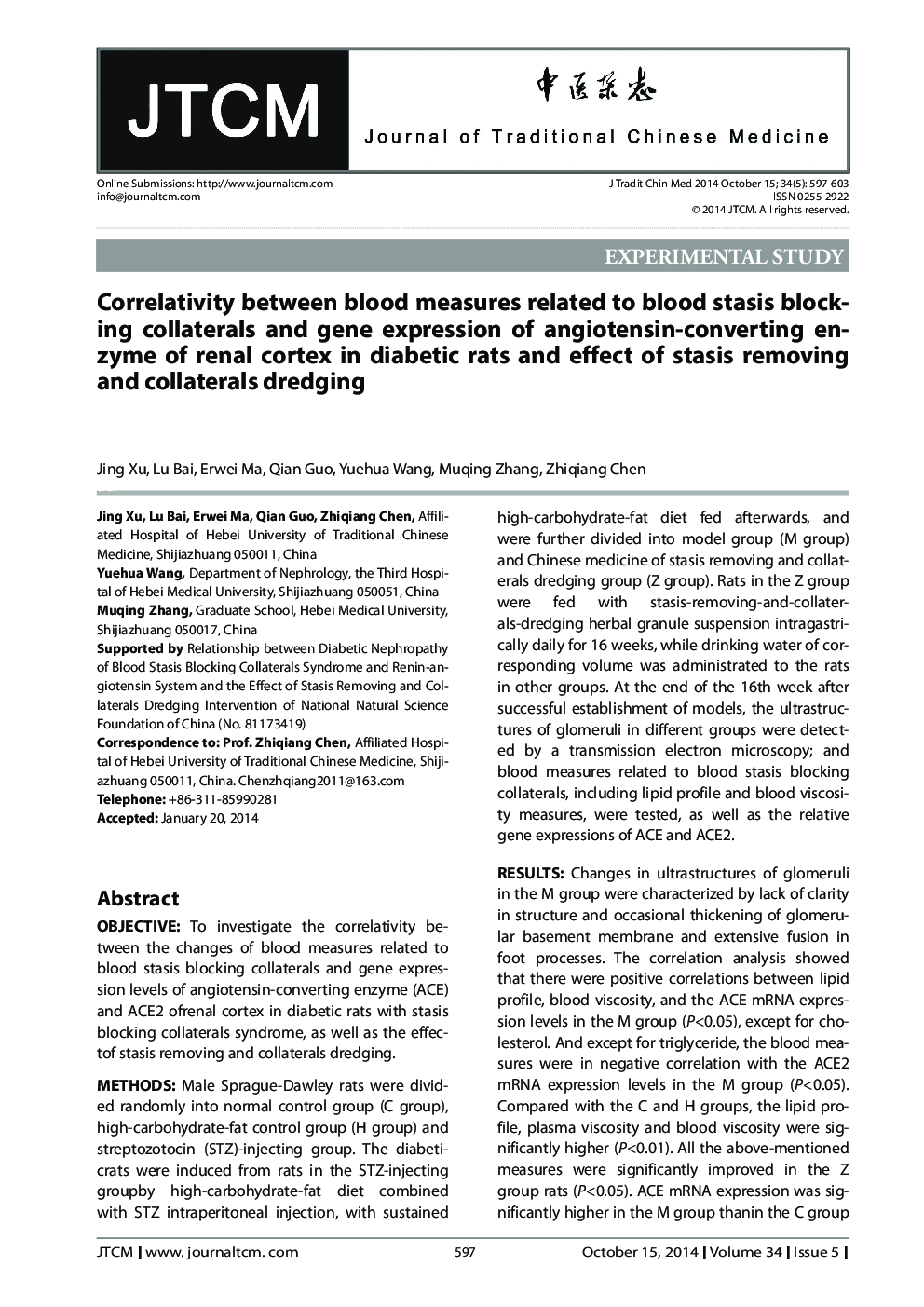| Article ID | Journal | Published Year | Pages | File Type |
|---|---|---|---|---|
| 4201008 | Journal of Traditional Chinese Medicine | 2014 | 7 Pages |
ObjectiveTo investigate the correlativity between the changes of blood measures related to blood stasis blocking collaterals and gene expression levels of angiotensin-converting enzyme (ACE) and ACE2 ofrenal cortex in diabetic rats with stasis blocking collaterals syndrome, as well as the effectof stasis removing and collaterals dredging.MethodsMale Sprague-Dawley rats were divided randomly into normal control group (C group), high-carbohydrate-fat control group (H group) and streptozotocin (STZ)-injecting group. The diabeti-crats were induced from rats in the STZ-injecting groupby high-carbohydrate-fat diet combined with STZ intraperitoneal injection, with sustained high-carbohydrate-fat diet fed afterwards, and were further divided into model group (M group) and Chinese medicine of stasis removing and collaterals dredging group (Z group). Rats in the Z group were fed with stasis-removing-and-collaterals-dredging herbal granule suspension intragastrically daily for 16 weeks, while drinking water of corresponding volume was administrated to the rats in other groups. At the end of the 16th week after successful establishment of models, the ultrastructures of glomeruli in different groups were detected by a transmission electron microscopy; and blood measures related to blood stasis blocking collaterals, including lipid profile and blood viscosity measures, were tested, as well as the relative gene expressions of ACE and ACE2.ResultsChanges in ultrastructures of glomeruli in the M group were characterized by lack of clarity in structure and occasional thickening of glomerular basement membrane and extensive fusion in foot processes. The correlation analysis showed that there were positive correlations between lipid profile, blood viscosity, and the ACE mRNA expression levels in the M group (P<0.05), except for cholesterol. And except for triglyceride, the blood measures were in negative correlation with the ACE2 mRNA expression levels in the M group (P<0.05). Compared with the C and H groups, the lipid profile, plasma viscosity and blood viscosity were significantly higher (P<0.01). All the above-mentioned measures were significantly improved in the Z group rats (P<0.05). ACE mRNA expression was significantly higher in the M group thanin the C group (P<0.05). ACE2 mRNA level was significantly lower in the M group than in the C and H groups (P<0.01); and its levelin the Z group was higher than that in the M group (P<0.01).ConclusionBlood measuresrelated to blood stasis blocking collaterals had positive linear correlations with ACE mRNAexpression and negative linear correlations with ACE2 mRNA expression in the M group. Chinese recipe of stasis removing and collaterals dredging could play a renal protecting role for diabetic rats by reducing lipid profile and blood viscosity, down-regulating ACE mRNA expression and up-regulating ACE2 mRNA expression.
